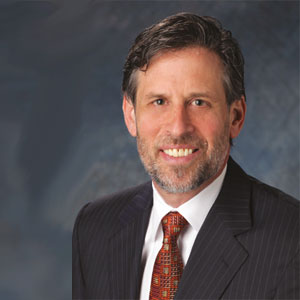 Stuart Sackman, Corporate VP, Global Product & Technology, ADP [NASDAQ:ADP]
Stuart Sackman, Corporate VP, Global Product & Technology, ADP [NASDAQ:ADP]There is no denying that over the past five years cloud computing has transformed how businesses operate. While some departments have moved faster than others—for example, marketing teams were early adopters with social and collaboration platforms—virtually every functional area, including HR leaders, are embracing cloud based solutions. In fact, today more than 50 percent of companies are actively working to replace legacy, on premise HR technology with SaaS solutions.
Why is this? SaaS human capital management (HCM) solutions offer many benefits to HR departments. They are often more flexible and easier to use, and they can be deployed faster than earlier generations of on-premises solutions. According to a 2016 report from Mercer, HR organizations reported that it took less than 12 months from signing the initial contract to fully implementing a SaaS HCM solution, and for half it took less than nine months to complete this process. To compare, these same organizations reported that if they were to implement an on-premises solution today, it would take at least two years.
While these advances have already transformed HR’s ability to work faster and more efficiently, I believe that we are just starting to realize the most significant opportunity cloud will offer HR leaders. The primary value of cloud for HR is data—and the establishment of something like “data-as-a-service.”
When analyzed properly, HR data can help companies generate smarter insights. In fact, the top reason that HR leaders say they are implementing a cloud HCM solution is that they “needed a single system of record for all HR data.”
“Data-as-a-service” will impact HR leaders and businesses in several ways. The first is through predictive analytics. As HR leaders use cloud to create a single system of record for all HR data, they will be able to start leveraging analytics and data modeling on top of it. This means they can go from just managing functions like payroll, talent and benefits to proactively using real-time insights to help the business prioritize what is most important, such as improving associate engagement and delivering real time training and coaching to drive better business performance.
For example, if the data across HR systems is connected, HR can correlate that data and run predictive models to show things like employee flight risk. Taking it a step further, those predictions can then be automatically acted on– say that I’m traveling to a meeting in El Paso, and the system identifies that two of my best performing, high potential team members are flight risks. It would then notify me, open a slot on my calendar to meet with them, and automatically create a briefing document with background information and recommendations on how to retain these key people.
Cloud will also give HR leaders the ability to use workforce data analytics to predict business performance. How does it work? Companies can identify patterns in their data in critical areas like diversity, compensation and retention. With the right benchmarking tools, they can use this information to assess how their organization stacks up against similar companies. Are they hiring the right people? Are they offering competitive pay and benefits? Getting a better understanding of where they stand can help HR leaders better predict how they will fair in the war for talent and other important business factors.
We have already seen the tremendous impact cloud technology has had on automating processes and creating efficiencies within the HR function—SaaS applications are pervasive and working in HR. The next frontier is using the cloud to connect workforce data to generate insights and tools so that the business—not just HR—can to make better decisions.